|
Hi everyone! For this month’s article, I wanted to discuss a more historical aspect of the series: an overview of the indigenous populations that appear within various Scooby-Doo series. Many of us who grew up with these episodes may have learned a thing or two about the history behind some of the staples of indigenous culture, such as cliff dwellings. While all aspects of this culture weren’t necessarily always portrayed in a correct fashion (as Native witch doctors didn’t exactly go around shouting nonsensical gibberish at random people), there are definitely some historical elements of the culture that are taught to us through various Scooby-Doo episodes over the years. Here to help me co-write this article is my best Internet friend (or Internet bestie, whichever term suits your fancy haha), Bradford N. Smith! Bradford is a professional screenwriter who hopes to someday write for Scooby, so if anyone at WB happens to be reading this, you need to hire Bradford already! Now that I’ve got the shameless plug out of the way, Bradford is going to start us off with the historical aspects of cliff dwellings that he learned about in “Decoy for a Dognapper.” Parts of the article that Bradford has written will be colored in blue, while my contributions to the article will be colored in pink, so you can tell who has written what. So, with that being said, take us away, B! Besides a brief encounter (which I’ll allow my cool friend to address later) in Mine Your Own Business, the first time the gang comes across any indigenous cultures is in the early Scooby-Doo, Where Are You! episode, Decoy For A Dognapper. Unfortunately, it is far from the best or most accurate representation in the franchise. Although the first act appears set in the suburbs, beach and downtown of a metropolitan city, once Scooby finds himself dognapped, the setting shifts to Indian Gap and an ancient village carved into the side of a cliff that is said to be abandoned. As a child, it was this depiction of cliff dwellings which was my first introduction to a culture and history outside of my own and, luckily, it is here that this episode seems to get a few things correct. While these sorts of structures are not found in California where the series is rumored to be set, the dwellings in the episode do bear some resemblance to those found in Arizona, specifically the Betatakin ruins and the improperly named Montezuma Castle National Monument, and, much like Shaggy quickly remarks later in the episode, cliff dwellings are said to have been used by ancestors of the Pueblo peoples. Sadly, outside of this, the episode relies primarily on stereotypes. Shaggy comments a couple times on his fear of being scalped, a practice long associated with the stereotypical “hostile Indian,” the Witch Doctor refers to the gang as “pale face intruders,” a phrase originating in dime novels though later attributed to Native peoples, and several times feather headdresses, tomahawks and a screaming wail are used as a means of identifying the Ghost of Geronimo (a secondary villain later explained away as a projection). On top of these insensitive errors there are a few other infractions, like the presence of a totem pole, an artifact associated with Northwestern Coastal tribes and not those of the Southwest, and Shaggy thinking the only food they may discover there are “Indian corn” (flint corn) and beef jerky. Ultimately though, the biggest problem with the episode may come from the simple fact that the true mastermind behind it all is a white man appropriating this indigenous culture for his own nefarious deeds. Two episodes of The New Scooby-Doo Movies also include people posing as indigenous people. The first of which is in the initial Three Stooges episode, Ghastly Ghost Town where one of the culprits is dressed up as Geronimo, though all he says is “oops!” in a dumb voice, telling you he’s probably just some random racist dude pretending to be a Native person from the start (which, admittedly, was very common in that series for the culprit to be revealed overly early on, for no reason, to the audience, but not the gang). The second was in The Haunted Showboat, and was another random guy, whom we never learn the name of, posing as the ghost of Injun Joe, a native person from the Tom Sawyer books. He resembles Injun Joe in appearance only, and acts simply like a white man would in costume. He does not have any indigenous qualities to him while in costume. A few years after Decoy For A Dognapper, the gang stumbles across another mystery revolving around cliff dwellings and an eerily similar looking villain, in The Scooby-Doo Show episode A Bum Steer For Scooby. This time around, the episode makes an improvement by identifying their setting as Texas (Daphne’s uncle’s ranch), which does contain some cliff dwellings, though not many, and they again best resemble ones which can be found in Arizona and Colorado. The other major similarity - the episode’s main villain - remains a stereotypical display of Native people. This time addressed by Velma and Shaggy as a “medicine man” (a less offensive term than “witch doctor” for the traditional healers of indigenous peoples), the character is given far less freedom when it comes to dialogue. While his counterpart managed to speak fluent English, this “medicine man ghost” is never allowed to say more than what is essentially a parody of Native chants: “Mooka-wanka.” And yes, this is still accompanied by a dance and the shaking of a maraca, as the “witch doctor” before him had also done. Although the previous iteration had a ghostly Geronimo chase the kids, this version contains a ghostly bull known as Tamuka (a name of African origin, meaning “to have awoken” or “to rise”) who is said to have been a spirit animal tasked with guarding the “ancient Indian burial grounds” of Hidden Valley. While these sorts of legends are not necessarily uncommon for certain indigenous cultures, the episode does take some liberties with the idea. Beyond this however, I would say that the episode demonstrates an attempt at better understanding the culture. While Shaggy seems to believe the “rich cliff dwellers” must have lived in what he calls the “penthouse” of the dwellings and relays to Scooby the common myth that totem poles were meant to “keep evil spirits away” (they were instead primarily for various types of storytelling), he seems to be displaying more of an innocent misunderstanding than outright acting offensive. In the end though, it is, as it was before, a group of white men uncovered as the perpetrators, using the legend and lore of the indigenous culture to aid in their mischief. Watch Out! The Williwaw! features a spirit owl of indigenous legend who captures anyone it calls the name of. I think, for the times, this is one of the best representations we get of the Native population. Though indigenous folk aren’t really discussed too much, the culprit is Grey Fox, who captured Velma’s uncle Dave from his home in order to smuggle treasure and cover it up. We do see some tribal justice, however, when another member of a tribe, Red Herron, brings Grey Fox into custody. This provides a somewhat good representation of indigenous populations for kids, that tribes aren’t some “crazy, incomprehensible culture” like some of the previous representations would imply. A Scary Night with a Snow Beast Fright features an Eskimo village in the North Pole. Our one Eskimo character we see, Chief Manook, is a pretty watered-down character and does not really do much with the gang before he is kidnapped himself. However, we do see an indigenous village with gigantic totem poles, which we later discover to be oil rigs. The explanation for the Snow Beast, however, is a bit confusing. The Snow Beast is said to dislike that the Eskimo village is built upon sacred lands, but I would assume the Eskimo village is the sacred land...unless they rebuilt something over the lands, but it was still the same people. It’s unknown why a mythical beast would care about that, but nonetheless, it’s another representation we get of indigenous people. In the entirety of the franchise, it’s hard to deny that one of the worst portrayals of indigenous people comes in the form of The Scooby-Doo Show episode Jeepers, It’s The Jaguaro. On their way to Rio de Janeiro, for the annual Carnival celebrations, the gang falls victim to “plane troubles” and finds themselves somewhat stranded in the middle of the Brazilian jungle and terrorized by the living embodiment of the Jaguaro, a part-gorilla, part-jaguar, part-saber-toothed cat worshipped by a tribe in the region. The moment we’re introduced to these Native peoples, the show’s already off to a rocky start as they’re adorned in the stereotypical masks and grass skirts prevalent with many portrayals in pop culture (attire Shaggy and Scooby will later wear as they mimic a tribal dance). We then hear as Shaggy’s concerns that this is a tribe of cannibals is put at ease by a pilot who explains they’re actually “headhunters,” leading Shaggy (and at times Scooby) to spend the remainder of the episode joking about his desire to keep his head, in a tone similar to his scalping concerns in the original series. And unfortunately, it only gets worse from there for this tribe that the episode makes look more “savage” than it does a pair of gorillas. Although by no means an excuse, it is implied by Barney - a supposed documentarian - that this may be a tribe of what researchers call “uncontacted peoples,” groups that really do exist in areas of South America, which may provide some explanation for their intense reactions to the gang. And while they seem to use this as permission for “savage Native” tropes - tribal drumming, a “witch doctor,” Shaggy and Scooby ending up on a spit to be cooked, amongst others - there is one moment not entirely worth criticizing. Near the episode’s third act, upon arriving at their plane to find a small feathered object, the show has Fred identify it as a “fetish,” a term used for objects in some indigenous cultures believed to be endowed with supernatural abilities, which I found surprisingly informative (he also teaches us the unrelated word “sluice” in this episode), although such items are more attributed to cultures found in West Africa and Northern America. But in the end, things stay true to the Scooby formula as this tribe, whose lines are restricted to “chamba chambala” and “wongala,” turn out to be victims of another white man using a sacred creature as a means to frighten people away from his illegal operation. The Hairy Scare of the Devil Bear does not feature any indigenous populations themselves, but we do get to see a devil bear (or “demon bear,” as one archaeologist calls it in the first few lines of the episode) that is supposedly a spirit that is haunting some ancient caves. A major clue in the episode is that many of the carvings supposedly telling of the bear spirit are simply just claw marks, which you’d think archaeologists would be able to tell, but maybe these weren’t among the brightest of archaeologists haha. We also see some ancient native relics when they discover the treasure at the end of the episode. In one of the few instances of indigenous people during the “Scrappy years” of the franchise, The Quagmire Quake Caper, from The New Scooby & Scrappy-Doo Show, takes us to Sulphur Springs State Park and a nearby village. Although it’s not specified in the episode, the desert landscape suggests this could be the real world Sulphur Springs Valley (Arizona), the city of Sulphur Springs (Texas) or possibly a reference to the former Choctaw Nation community in Oklahoma named Sulphur Springs. Invited to investigate by a visiting seismologist, the group soon meets the unnamed village chief and Quanto, who share differing opinions on whether or not their community should remain in the area. Unlike many previous iterations, the indigenous people here are presented in somewhat more modern attire, though it does remain fairly stereotypical in the patterns, ponchos and simplified feather headdresses. The chief is also given the standard “Native elder” voice - deep, a little slower and saying things like “our people have lived here for centuries, guarded by the great spirit.” A major piece of evidence in the case is a “traditional Indian medicine staff” which features a golden eagle head and feather, that is discovered to have ties to an “ancient tribal spirit chamber.” When Daphne, Shaggy and the Doos eventually discover this chamber, it’s revealed to be full of totem poles (again, not something which would be true for the area), a buffalo hide (and head) for some reason and a giant pot full of “Indian gold.” It’s this gold that is revealed to have been the motivation for the mud monster terrorizing the area, who, to this episode’s credit, actually turns out to be the indigenous villager Quanto and not a white man. However, almost as soon as this reveal happens, the chief and several other villagers arrive to the tune of tribal drumming and, as the episode continues, all the good it achieved in representation is quickly undone. We see all four members of the gang wearing feather headdresses, Scooby loading the Mystery Machine with a plethora of patterned quilts he’s taking as souvenirs, and the chief giving them the medicine staff as a memento from “my people.” Then Scooby, now with a yellow mask around his eyes in addition to his headdress, takes the staff and begins dancing/chanting to which Shaggy warns him he could be dealing with some “powerful medicine,” followed immediately by a small rain cloud appearing over Scooby's head, to which he excitedly remarks “it really works!” Wedding Bell Boos!, another episode of The New Scooby & Scrappy-Doo Show, again features a sought after “Indian treasure,” however includes no representation by indigenous people. Visiting Shaggy’s and Scooby’s families in Plymouth, Massachusetts for Shaggy’s sister’s wedding, the group soon learns this event is haunted by Shaggy’s pilgrim ancestor, McBaggy Rogers, who arrived on the Mayflower. While “Part One” of the episode mostly revolves around the ghost’s introduction, “Part Two” introduces McBaggy’s diary and a passage about a “priceless Indian treasure” buried on the property. That soon leads into the Doos disguising themselves as indigenous people, and the Rogers (plus Daphne) dressing up as pilgrims, to trick the ghost with a maneuver that includes “Chief Scooby” wanting to “make peace” with a peace pipe - the name commonly given to the ceremonial pipes used in various Native cultures for sacred ceremonies. It’s clearly a watered down, stereotypical use of the object, but luckily this is pretty much where the episode’s take on indigenous cultures ends. When the treasure is discovered, it is revealed, much to the villain’s dismay, not to be gold or diamonds stolen from the indigenous people, but ears of corn. Although it’s not flint corn, it is referred to by that species’ nickname (“Indian corn”) and is said to have been viewed as treasure, not by the Native people (as one might have expected), but by the pilgrims, as it would grow into large crops so they’d “never go hungry again.” The Story Stick from A Pup Named Scooby-Doo is an interesting episode that actually seems to do its research on the indigenous population, instead of making random stuff up based off of stereotypes or other such inaccuracies. The episode starts us off with Shaggy and Scooby whooping and hollering, and doing all the negative stereotypes that are not at all consistent with Native culture. Daphne’s Native friend, Warren, then comes out and simply says “hi!” and begins speaking in perfect English. This prompts Daphne to tell Shaggy and Scooby to “get serious, guys!” and that indigenous people are “just like you and me.” While not necessarily true, because they are different in some ways and that’s totally okay, this seems like they are trying to inform kids that indigenous people are not these frightening crazy people, sort of in the vein of the moral message about teaching kids to not do drugs two episodes prior in “Scooby Dude.” Warren does mention his “crazy” grandfather, however. Looking at this from an adult lens, I sort of understand this more as the grandfather not actually being a crazy man, but rather, a lack of understanding between an assimilated youth and his grandfather. This is a very common generational issue that can occur, especially when the youngest generation begins assimilating into the mainstream culture and the older generation feels left behind and unable to fully assimilate, because it is not something they grew up with. It’s interesting that Scooby brought some representation to that issue, albeit in a simplistic way, and I wish I would have caught that as a kid! The monster in the episode is the Totem Monster, which is a three-level living totem with three faces. I always thought this choice of villain was pretty fitting given the use of totems in Native culture, however, I do wish that the creature had more lore behind him. The creature also speaks English for most of the episode, but when he’s telling his story, suddenly he speaks gibberish and no one can understand him, which I thought was an unfortunate inconsistency. While I do not intend to get overly political here, one major metaphor I noticed in this episode was that the culprit was a white person, Mr. Ryan, who was trying to steal land away from Warren and his grandfather. Historically, this is a huge metaphor about how white people took the Natives’ land away from them, which in itself is an interesting historical parallel. New Mexico, Old Monster has the gang in New Mexico, visiting Shaggy’s childhood friend Jimmy Proudwolf, who is an indigenous man that he used to go to daycare with. Jimmy also interestingly has a dog named Shooby, which is sort of an interesting parallel to my above comments about how “The Story Stick” frames it as a “Indigenous people being different isn’t a bad thing, they’re just like us” narrative. Jimmy having the same type of dog as Shaggy does, and even naming them with only one letter difference, sort of reproduces this narrative of similarity and shared meaning between indigenous and non-indigenous people, despite their unique differences. This is certainly the message I took away from the episode when first watching it when I was much younger than I am now, and I feel this is a very beneficial and important message for kids to see and hear in the media. We get a very interesting villain as well in this episode, a gigantic bird of Native legend, the Wakumi Bird! The culprit is a United States Army colonel, who said that he fabricated the entire legend (which doesn’t totally make sense, unless he just meant fabricated it to the gang...as the native people were alive hundreds of years prior to the colonel’s existence) in order to scare people away from the cliff dwellings. The Colonel, Henry Thornwald also disguises himself as a native shaman to trick the gang into believing the legend of the Wakumi. There’s a bit of a plothole here, as it seems others besides the gang know about the Wakumi, which surely the native people would know did not come from their own legend as this shaman they’d never seen before told them. Who knows though, maybe this colonel was in it for the long con and started this as a kid haha. We also see the gang in some cliff dwellings….sort of? It’s more a mountain than a cliff, but they are treated as cliff dwellings. We don’t exactly see much of indigenous culture in the cliff dwellings...but, Shaggy’s friend Jimmy does make dream catchers on his reservation (under the very Shaggy-like name “Like, Jimmy’s Dreamcatchers!”), and sells them among other Native art. This is why this episode is one of the best representations of indigenous culture. It shows that Native peoples aren’t these crazy folks cut off from the world, but are real people who have a place in the world and have made their way in it, and somewhat assimilated (for better or for worse) with mainstream culture. Although a relatively recent series, Scooby-Doo! Mystery Incorporated is not without its own problematic elements when it comes to indigenous peoples, specifically in Attack of the Headless Horror. While there are brief moments of ignorance by some characters, it’s Rick Spartan, whom this episode mostly centers on, that truly displays some significantly cringe-worthy prejudice. Although it appears to have been done for the sake of humor, Rick’s views on Native cultures are seriously flawed and not the type of material which should be laughed off. Almost immediately we are introduced to a major red flag in the form of Rick’s “sidekick,” his British assistant and former Oxford classmate, Charles Wheetlesby, whom Rick refers to as “Cachinga” and speaks to in a degrading manner. And while telling him things like, “bring here quickie quickie” and “why not come when monster make bad bad?” may sound funny, it becomes serious when we learn that Rick is paying Charles to play the part of a “savage native,” implying this method of speech is derived from the stereotypes of the “uneducated native.” Additionally, Charles at one point brings up Rick’s desire for him to dress in a bearskin and antlers, in addition to carrying his spear, which Rick argues is “what savages wear,” and it is implied that Charles lives in a tribal yurt in the front yard of Rick’s suburban home. Charles would retain this “native” role in a later appearance, in the episode The Devouring. And while hiring a white man for the role of a stereotypical indigenous person is a major problem (as is Charles accepting it), it’s also Rick’s entire claim to fame that should be put on trial as well. Following in the footsteps of Indiana Jones, Rick is another in a long line of “treasure-hunting adventurers,” whose fame is built upon the looting of artifacts from Native cultures (or in Rick’s own words, the “plundering” of tombs). In fact, it is his stealing of a “super creepy” shrunken head from an Aztec-like temple in the Amazon that results in the curse around which this episode revolves. And while this curse and all related to it are fictional, that doesn’t keep the episode from treating it like past series have treated indigenous cultures, including a whistling “tribal” score accompanying the monster’s appearances; a monster which wears a grass skirt, tooth necklace and some tribal tattoos, and turns out to be a white woman. Unfortunately, these negative aspects are not restricted to Rick and his company alone, with Fred telling Sheriff Stone to “arrest that Native” (Charles) and the entire gang performing a ritual that included Scooby waving a medicine stick over a hole as he and the others chanted. For one of the franchise’s more comedy-driven series, Be Cool, Scooby-Doo! appears to take a more respectable approach to indigenous cultures with the episode Game of Chicken, though is not completely without its flaws. In what may be one of the best decisions from any of the mentioned episodes, the Native culture is described by name, separating them from any real world comparisons, as the completely fictional Zatari tribe (named, according to Jon Colton Barry, after video game company Atari, but with an additional “z”). That said, there can certainly be some arguments made that this parody is still inconsiderate of real world cultures and their beliefs. The notion, for example, of a culture worshipping chickens - without fully understanding the animal - can be seen as the type of joke walking that fine line between an insulting and comedic observation of the idols of some tribes. Additionally, the “last of the Zatari” being a strange, white man with an impossible to pronounce name (Rick), may also fall into that category, considering many indigenous people were not white, were viewed by other cultures as strange and frequently had their names butchered by those who saw them as unpronounceable (Sitting Bull’s name was actually an abbreviation of his Lakota name, Tȟatȟáŋka Íyotake, which fully translated to Buffalo Bull Who Sits Down). Looking at the rest of the episode, we find many other common stereotypes… an Easter Island stone head made to look like a chicken, a warrior spirit adorned in a mask and fur who carries a spear and doesn’t speak (portrayed by a white man who is earlier seen desecrating the tribe’s sacred caverns with graffiti and littering glow sticks throughout), and an ancient treasure that’s revealed to be something not seen as valuable by most cultures (a chicken). So although many of this episode’s elements are played for humor and revolve around a group of entirely fictional indigenous people, there are certainly elements which do not play well when considering what they represent. Outside of the Americas, as the gang explores Australia in Scooby-Doo! and the Legend of the Vampire, we get some, albeit minor, references to this country’s aboriginal people. Primarily, it is the character of Malcolm Illiwara (referred to only as “Grandfather” by concert organizer, Daniel) who is our window into the culture, by way of one scene. He does, of course, look “the part,” having been given a walking stick, jewelry, headband and open vest, and espousing the notion that the mystery can be explained away as part of a legend. However, beyond this, everything that is a direct reflection of his culture is presented in a considerate way. As the gang arrives at his home, he is found sending smoke signals (though Daniel does jokingly suggest he use the phone) which they are all intrigued by before helping to transport him, via canoe, to a “tribal council meeting,” which we unfortunately do not get the opportunity to see. And to their credit, none of these elements are really played for laughs, with Shaggy legitimately inquiring if he can be taught to send smoke signals in case he gets into trouble. Malcolm returns again later, having guided the Hex Girls through the Outback, back to the venue, and in the end seems to have come around to the idea of his grandson’s event. Overall, it does a nice job, with the only majorly concerning aspect of the entire production coming from a single, throw away line from Fred, prior to breaking and entering a music manager’s trailer. While looking for a way to cause a distraction, Fred for some reason suggests that Daphne disguise herself as an “aboriginal medicine woman.” Luckily, this never occurs. The direct-to-video Scooby-Doo! and the Monster of Mexico features, as the title suggests, a heavy focus on Mexican culture, including the obligatory shoehorning in of the Day of the Dead celebrations, but also puts significant focus on the indigenous Aztec people. Set in a village located in the real state of Veracruz, Mexico, the gang spends a lot time traversing temples as they investigate the mystery of a vengeful chupacabra, many of which appear similar to the step-pyramids actually built by many Mesoamerican cultures. And, truthfully, there is a lot of excellent representation in this film; Velma mentions the Olmec people “built Mesoamerica’s first great civilization,” we’re introduced to the deity Quetzalcoatl and, while the gang at first calls him a “medicine man,” an old man is able to identify himself as a curandero (which he admits is sort of similar, as is a shaman). Now, the “wise old Native” stereotype is first a little heavy in the way the curandero refers to visiting Americans as “people from the North” and “the strangers,” as well as warning the gang they’re “in grave danger,” but it’s quickly turned on its head as the gang departs and he presents Fred with a business card for his website, AncientMexicanWisdom.com, a great tongue-in-cheek way of acknowledging the stereotype and showing that the culture is not oblivious to modern technology. When it comes to issues of representation, the real concern lies in the presentation given to the gang at Mexico City’s National Museum (or Museum of Anthropology) which correctly identifies 1325 as a year in which the Aztecs existed, but leans heavily into presenting the culture as a tribe of “savage Natives” with the museum guide telling them, “War-like Aztecs had many barbarous rituals. For example, warriors sacrificed thousands of captives on the altars atop the pyramids, often ripping out their still beating hearts to offer to the gods.” However, the moment that is perhaps the most uncomfortable comes during the gang’s altercation with a group of tourists at the pyramids. It is during this that they duck into a temple’s “ancient tombs” and, at Velma’s suggestion, rob “traditional clothing of the Native Indian skeletons” for disguises. Cultural appropriation aside, that’s a disturbing level of grave desecration.
We also get some minor mentions potentially worth mentioning, in the form of a “Cigar Store Indian” making a very brief appearance in Mine Your Own Business, as well as a somewhat horrifying scene in Nowhere to Hyde of Shaggy and Scooby reenacting the whites taking away all the Native people’s stuff in real life. It was a bit of an unfortunate inclusion in the episode, as it really wasn’t needed and the history that they were joking about most certainly is not a joke. It’s a pretty dark piece of history and certainly nothing to laugh at. Throughout the franchise, a couple other appearances, not yet mentioned, by indigenous people pop up in relatively minor circumstances that are worth noting. The first, from The New Scooby-Doo Movies episode Weird Winds of Winona, is hardly anything concrete, as no mention is made within the episode itself, but it has long been rumored that Mark (the Fred-like member of the Speed Buggy gang) is altered from being a Caucasian man to being one of indigenous ancestry. And while a simple glimpse of an old Speed Buggy cartoon certainly makes it clear that this episode darkened his skin, his actual ancestry is left up to interpretation (and was likely simply the result of a decision to better differentiate him from Fred). The other minor mention worth exploring comes from the direct-to-video adventure, Scooby-Doo and the Alien Invaders. Again, no direct mention of ancestry is made, but many have seen the mechanic, Buck, as somebody from an indigenous culture. Should that be true, his use of short, slow sentences comes off a little stereotypical and his exclusion from the final credits is a bit upsetting (although that’s true regardless of his race), but would overall be a good modern portrayal of a man with Native ancestry. In addition, there’s also the Native village that appears in A Tiki Scare is No Fair. Contrary to popular stereotypes, Hawaiian people are not necessarily Native. In fact, only about 10% of Hawaiian people are native to the island, the rest being a mix of White, Black, Asian, etc. Because of this, we did not want to presume that Mano Tiki Tia (or other Hawaiian episodes or films) were intended to be related to indigenous populations, so we have chosen to not cover them in this overview. This also extends to the variety of “ancient curses” and “ancient spirits” the gang have come across, which may not necessarily have roots in an indigenous culture. It should be worth noting that while these paragraphs have indulged in some significant criticism of the Scooby-Doo franchise, we are, as many of you are, fans of the show and well aware that it is an animated series produced for children and families. This post wasn’t intended to shame anyone, nor was it meant to be a politically correct attack on a beloved Hanna-Barbera classic, but simply wanted to explore the portrayal of indigenous people within the Scooby-Doo franchise over time. We are also not making the accusation that any of this was done intentionally to cause harm or to disrespect cultures, but was likely just overlooked. It’s not unusual for material produced by people of one culture not to be aware of how their representation of other cultures may be viewed. That’s an impossible responsibility to put on anyone, but it is a good example of how representation behind the scenes matters. Perhaps some of these issues could have been cleaned up along the way by writers, producers, directors, storyboard artists or other industry professionals with Native ancestry and enhanced to give children of these cultures better representations of themselves and their families. As a comedic series, there is obviously an obligation to make people laugh, but there is also a moral obligation, as a program which many are viewing during an impressionable time in their lives, to create humor in a manner that is not mocking or mischaracterizing cultures. Because of the times in which some of these episodes were written and aired, not all of the representation of indigenous people in the franchise are positive (especially in the early part of it), hopefully this article was still an interesting and informative piece on the representation of indigenous people in the Scooby-Doo franchise. I hope you enjoyed reading this article on the more historical aspect of Scooby, which is admittedly in a very different style than I typically write on the site. And I’d also like to thank Bradford once again for helping me write the first co-written editorial article ever in the history of the site! Thanks, B, for your great contributions and for being an amazing friend! If you want to follow Bradford on social media, you can follow him @hireBRADFORD on both Twitter and Instagram, and be sure to check out all his amazing Scooby-Doo fan scripts at bradfordwritesscooby.com.
23 Comments
Tom Holste
7/3/2020 12:02:16 pm
Thanks for the thoughtful article.
Reply
7/3/2020 01:28:21 pm
Thanks, glad you enjoyed it! I saw that earlier this morning, looks really good!
Reply
Bigscoobydoofan
7/3/2020 01:23:28 pm
Do you know when Bradford will release the next batch of guess who fan scripts?
Reply
7/3/2020 01:33:01 pm
Good question! The next one's pretty close to finished... but I've been putting together a few original series spinoff pitches/pilot scripts to share as well, so I'm a little behind. Don't worry though, they're definitely coming! (and so is another whole season's worth of them)
Reply
Bigscoobydoofan
7/3/2020 01:50:31 pm
Awesome, I can’t wait!
Reply
Sdf
7/3/2020 06:37:22 pm
Great job!!!
Reply
daphne
12/4/2020 09:02:20 am
Thank you guys so much! This article was so helpful, and I am so appreciative of the work and research you put in! I am so glad I found this site! <3
Reply
12/4/2020 09:34:22 am
Thank you so much, Daphne! <3 Welcome to the site! :)
Reply
Graig
4/24/2021 12:28:27 am
Thanks so much for a really interesting and informative post! While it's true that they haven't always gotten their representation right, it is interesting to see they were able to mix some history with fiction. And I have to say, as wrong as cultural appropriation is, I like that white men tended to be the bad guys, instead of actual indiginous pe
Reply
Graig
4/24/2021 12:30:51 am
actual indigenous people, as it almost serves as a reminder that everything these men are doing is wrong, including approprating another culture for personal gain.
Reply
This was a really interesting collaboration and I had a lot of fun watching old episodes to do research. I sometimes forget how many instances in the franchise there are with indigenous people and it was nice to see there was somewhat of an attempt to get better with their representation as the years progressed.
Graig
4/24/2021 12:17:07 pm
Yeah, it is nice to see that as they went along, they tried to better represent indigenous people. I hope that's something they continue to work on as the franchise continues. 4/24/2021 02:47:34 pm
It's definitely great to see that the franchise has grown in their representation of diverse groups over the years. We've definitely come a long way from the days of "Mooka Walka" or whatever gibberish they had the indigenous villains say.
Graig
4/24/2021 03:01:10 pm
Yeah haha. I remember "Decoy For A Dognapper" being one of my favorite episodes as a kid, and while I still love the main plot, those elements are just so cringey to me now. 4/24/2021 03:23:04 pm
I totally feel the same way about “Decoy for a Dognapper” and the racist scene with Scooby and Shaggy pretending to be Chinese in “Mystery Mask Mix Up.” The main plots are great to both of those, but those less inclusive elements come off as super cringey to me as an adult.
Graig
4/24/2021 03:29:46 pm
Oh God I completely forgot about that scene. So cringey and gross for sure. 4/24/2021 04:04:44 pm
Oh cool! Please do share them here once you start working on them, I’d love to hear your ideas! :)
Graig
4/24/2021 04:09:00 pm
Will do! Haha :) 4/24/2021 10:44:17 am
Hahaha that's a great point about white men being the bad guys! It probably wasn't intended, but that actually provides an unintentionally kind of positive message about the dangers of racism lol.
Reply
Graig
4/24/2021 12:05:55 pm
Thanks! It was something I thought about while reading this. And yeah, I'm 100% sure it wasn't intentional lol. But it works.
Graig
4/24/2021 03:01:41 pm
You're welcome. :) :) Leave a Reply. |
AuthorWildwindVampire Categories
All
Archives
July 2024
|

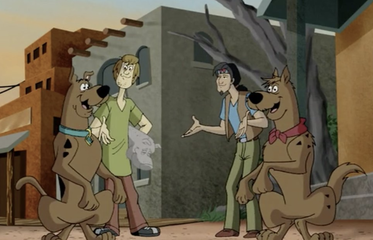
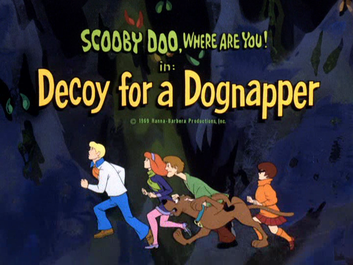
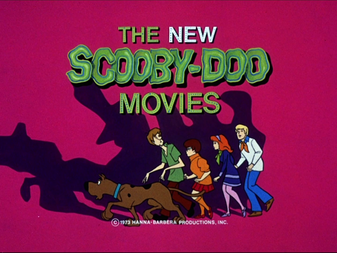
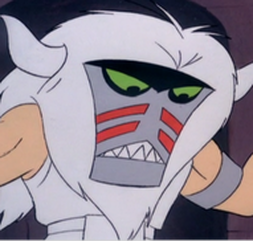
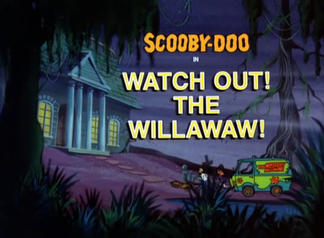
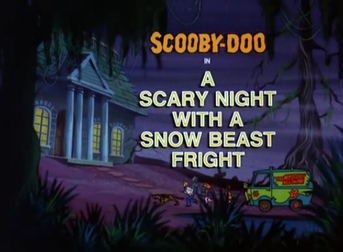
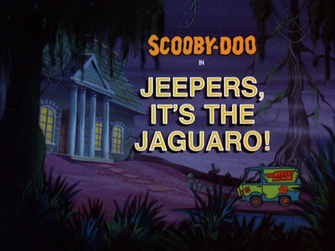
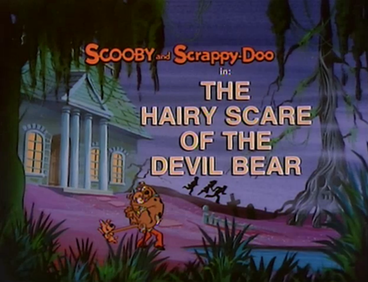
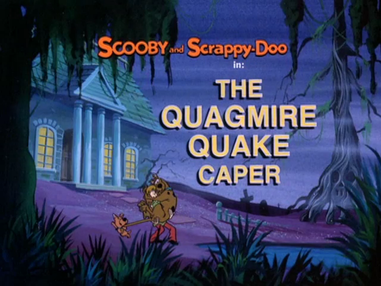
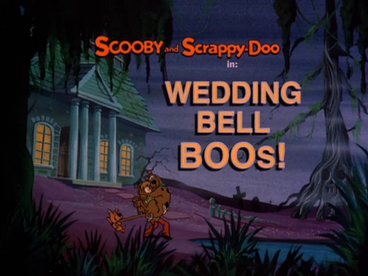
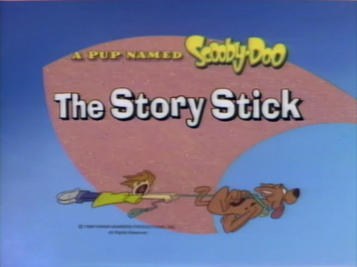
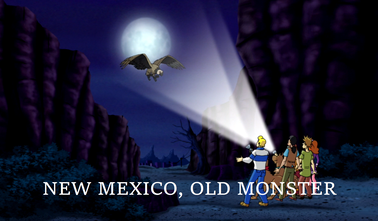
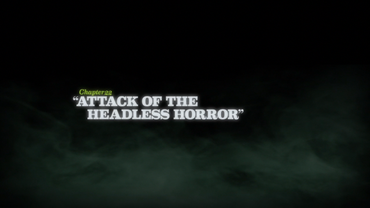
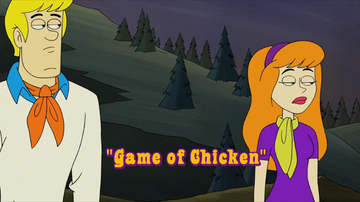
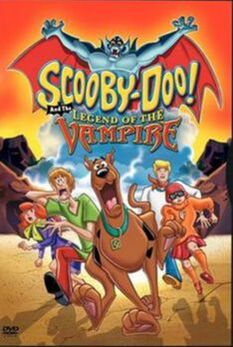
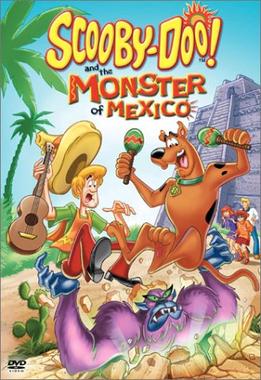
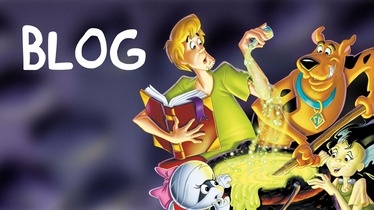
 RSS Feed
RSS Feed
